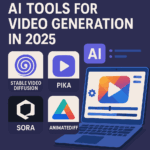
Introduction to AI and ML in Software Development
Artificial Intelligence (AI) refers to the simulation of human intelligence processes by machines, enabling them to perform tasks that typically require human intelligence, such as reasoning, learning, and problem-solving. Machine Learning (ML), a subset of AI, involves the use of algorithms and statistical models that enable machines to improve their performance on tasks through experience.
In the context of software development, AI and ML are employed to automate repetitive tasks, optimize workflows, and enhance decision-making processes. By leveraging these technologies, development teams can accelerate product development cycles, reduce errors, and deliver more robust software solutions.
Applications of AI and ML in Software Development
Code Generation and Autocompletion
AI-powered tools assist developers by suggesting code snippets or generating entire functions based on natural language inputs. This capability accelerates coding by automating routine tasks and reducing the likelihood of human error. For instance, AI-driven autocompletion features predict the next lines of code, enhancing development speed and accuracy.
Bug Detection and Debugging
Machine Learning algorithms analyze codebases to identify patterns that may lead to bugs or vulnerabilities. AI-driven tools can automatically detect anomalies, suggest fixes, and even predict potential issues before they occur, thereby improving code reliability and security.
Testing Automation
AI enhances software testing by generating adaptive test cases, prioritizing critical tests, and automating the execution of test scenarios. This leads to more efficient testing processes, faster identification of defects, and ensures that software meets quality standards.
Project Management and Resource Allocation
AI assists in project management by automating routine tasks, improving time estimates, and optimizing resource allocation. AI-driven tools help schedule tasks more efficiently and monitor system performance in real-time, optimizing deployment and preventing potential failures.
Documentation and Knowledge Management
AI facilitates the creation and maintenance of documentation by extracting relevant information from codebases and generating user-friendly documentation. This ensures that documentation is up-to-date and reduces the manual effort required from developers.
Security Enhancement
AI enhances software security by analyzing patterns within the codebase to detect vulnerabilities and inefficiencies. AI-driven tools can automatically detect bugs and suggest fixes or optimizations, leading to more secure software.
Benefits of Integrating AI and ML in Software Development
Increased Productivity
By automating repetitive and time-consuming tasks, AI and ML enable developers to focus on more complex and creative aspects of software development. This leads to increased productivity and faster development cycles.
Improved Code Quality
AI-driven tools assist in writing cleaner and more efficient code by providing real-time suggestions and identifying potential issues early in the development process. This results in higher-quality software with fewer bugs.
Enhanced Decision-Making
AI provides data-driven insights that aid in making informed decisions regarding design choices, resource allocation, and project timelines. This leads to more strategic planning and execution.
Cost Reduction
Automation of tasks through AI reduces the need for extensive manual labor, leading to cost savings in development and maintenance. Additionally, early detection of issues minimizes the costs associated with post-release bug fixes.
Challenges and Considerations
Data Privacy and Security
Implementing AI and ML requires access to large datasets, which may contain sensitive information. Ensuring data privacy and security is paramount to prevent unauthorized access and comply with regulations.
Dependence on Quality Data
The effectiveness of AI models depends on the quality of data they are trained on. Poor-quality or biased data can lead to inaccurate predictions and suboptimal performance.
Integration with Existing Systems
Integrating AI tools into existing development environments can be challenging, requiring compatibility assessments and potential restructuring of workflows.
Skill Requirements
Developers need to acquire new skills in AI and ML to effectively utilize these technologies. Upskilling and training programs are essential for smooth adoption.
Future Trends in AI and ML for Software Development
AI-Driven Development Environments
AI-powered Integrated Development Environments (IDEs) are becoming more sophisticated, offering intelligent code assistance, real-time debugging, and performance optimization suggestions. These tools enhance developer efficiency and improve code quality.
Adaptive Learning Systems
Future AI systems will be capable of learning from user interactions and adapting to specific coding styles and preferences. These systems will evolve to provide more personalized and context-aware assistance, reducing manual intervention.
Ethical AI Development
As AI becomes more ingrained in software development, ethical considerations such as bias mitigation, transparency, and responsible AI use will gain prominence. Developers will need to adhere to ethical AI frameworks to ensure fairness and accountability.
Conclusion
AI and ML are revolutionizing software development by automating processes, improving code quality, and optimizing workflows. While these technologies present challenges, their benefits far outweigh the drawbacks. By embracing AI-driven tools, developers can enhance productivity, reduce costs, and create more secure and efficient software solutions.
For more insights on AI-generated content and its impact on digital media, check out our in-depth article: AI-Generated Content: How It’s Shaping the Future of Digital Media.
To stay updated with the latest advancements in AI and software development, consider exploring authoritative sources like MIT Technology Review.










